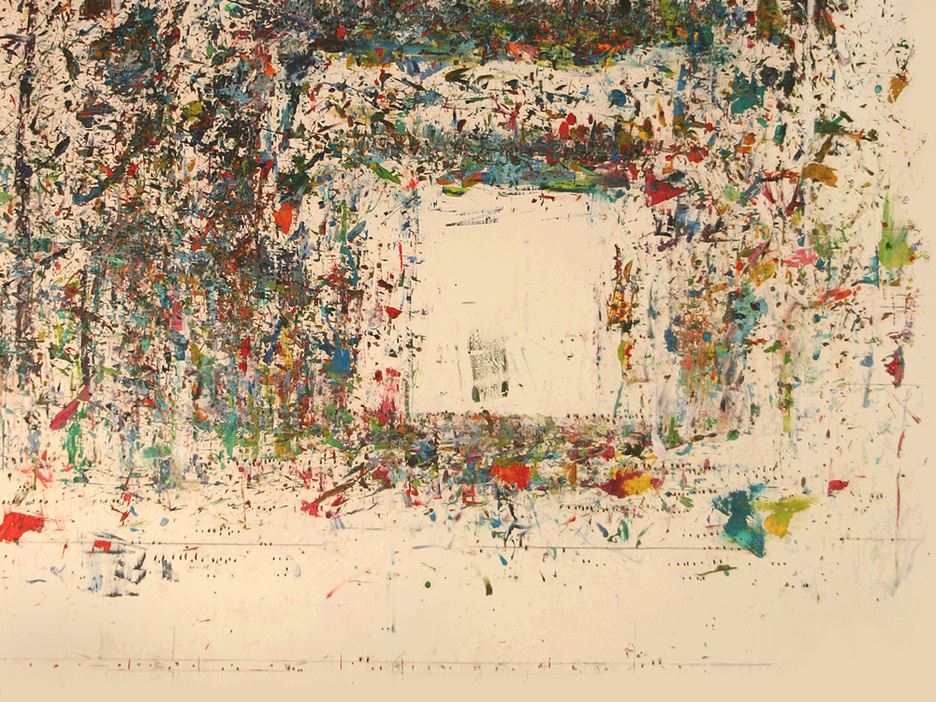Techné: John R. Barkley, Amy Jenkins, Christos Pantieras
Karsh-Masson Gallery

Wallpaper on John R. Barkley's website, copyright John R. Barkley
It's often a challenge to look at, let alone write about, contemporary art. Riddled with themes like alienation, isolation and technology, artists and curators frequently write about the work in ways that makes it, at best, even more unknowable. "The worst sin that can be committed against the artist," wrote Henry Miller (1891-1980), "is to take him at his word, to see in his work a fulfilment instead of an horizon."
We live in a time where increasing value is placed on obscure highly personalised artistic expression. Perhaps this is happening because outside of consumer culture, our collective cultural identities are being so eroded. There is no collective horizon.
Techné, a group show of work by John R. Barkley, Christos Pantieras and Amy Jenkins, examines these ideas. Shown inside our exquisite (air conditioned!) city hall, the artists' prolific use of found material forms a perfect counterpoint.
Barkley's huge mixed media pieces, consisting primarily of oil paint in rich dark purples, violets and maroons, strongly evoke the sea. I am not a fan of abstract expressionism at all, but Barkley's use of deep colours and thick texture drew me in—"Pulley", 1998, 120 x 74 cm, particularly so. Complete with thick rope, the approximately 8" wide pulley has been stuck to the board with duct tape and staples, thick lashings of paint, like seawater, splashing over it all.
Carefully fashioning vessels out of wax and adding found objects, in some pieces, Pantieras placed the lot into tiny compartments in cupboards attached to the walls. They reminded me of the trunks in some of Gabriel Garcia Marquez's writing. In Marquez, the trunks' contents often remain a mystery. In Pantieras' work the mystery lies in what the contents mean—almost like 3-dimensional surrealism, or to follow Marquez, 3-D magic realism.
Les pièces de resistances are two pieces by Amy Jenkins. "Underground Profound", 1999 consists of four manhole covers, hanging from massive chains along one wall. Jenkins admits part of the huge response to them is their sheer weight. "We had to speak to the building engineers," she says, "to make sure there was enough structural support in that wall. There's about a thousand pounds on it."
Encrusted with rust, pockmarked and lined with age, the covers seem like battle-worn shields, each uniquely worn by its own passage. Jenkins places them in the context of cities and the technologies used to order our environment, but for me, they speak to the emotional forces that can be battened down beneath the hatches.
Like "On attend toujours", 1999, 240 cm square, the question is what lies on the other side. Two colossal ageing garage doors, closed, have their windows boarded up, painted in varying scarlet and blood red. The symbolic weight of the doors is enhanced by their immensity. "I started to think about those doors in terms of revolution, of going through a transition ... to whatever lies ahead," Jenkins says. "I'm waiting for some kind of transition or change ...some sort of ecological revolution."
Published in The Ottawa Xpress, 1999

